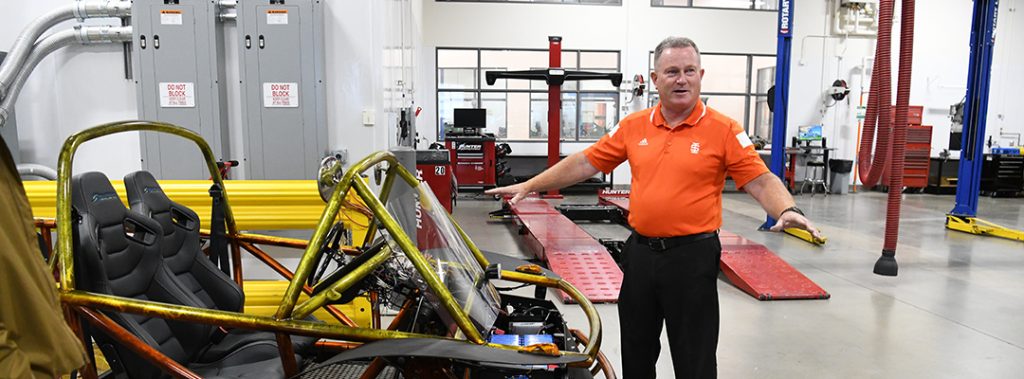Automotive technology program bridges skills with industry demands


Seeing former students return and witnessing their career growth in the industry after five or 10 years, is truly satisfying.
Brock gunter
Growing up on a farm in Marsh Valley, Brock Gunter’s curiosity drove him to tinker endlessly.
“I took auto all four years of high school,” said Gunter. “My favorite classes were where I got to see how things worked and tear them apart.”
That passion led Gunter to the College of Southern Idaho, where he earned a certificate in diesel technology. For 13 years, he worked in the service department of a Pocatello car dealership. Though he loved his work, a personal connection with Dave Treasure, chair of Idaho State University College of Technology’s transportation department, changed the course of his career.
“They needed an automotive technology instructor, and it felt like a perfect fit,” said Gunter. “Eighteen years later, it still is.”
Gunter’s curriculum, accredited by Automotive Service Excellence (ASE), primes students in engine repair, transmissions, steering, brakes, electrical systems, HVAC, and engine performance. He attributes the program’s success and high job placement rates to plenty of hands-on learning opportunities.
“The last eight weeks of the program, our students focus on what we call live work,” said Gunter. “Some of them work on the cars we have in the shop, and others work in a shop in the community.”
Gunter leans on connections with his technical advisory committee (TAC) to help students find internships and job opportunities. Comprised of representatives from local dealerships and independent shop owners, their insights help Gunter align his teaching methods with industry demands, leading to program enhancements and equipment upgrades. Recent feedback from the committee led Gunter to request new diagnostic equipment and electrical trainers using funds from Governor Little’s Leading Idaho initiative. But it’s not just the hands-on learning opportunities, state-of-the-art equipment, and active and engaged TAC that draw students to Gunter’s program.
“ISU is kind of unique in that, in addition to technical certificates, students can earn an associate’s degree in two years by completing general education requirements,” explained Gunter. “There’s also a path to a four-year Bachelor of Science degree, which draws a lot of students from out-of-state.”
Gunter’s program also attracts interest from area high schools by offering dual credit.
“So I have about 10 students from all three high schools come up here for the last two hours of the day,” said Gunter. “They get the whole first semester done while still in high school, saving them time and money if they choose to continue the program after graduation.”
Regardless of where they come from or where they end up, Gunter takes immense pride in witnessing his students succeed. “Seeing former students return and witnessing their career growth in the industry after five or 10 years, is truly satisfying,” said Gunter.
 Official Government Website
Official Government Website